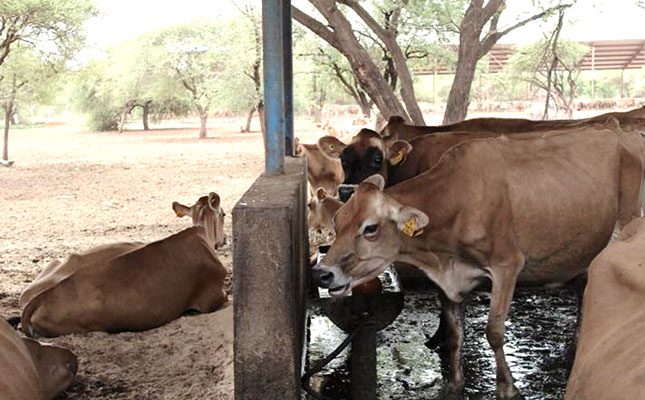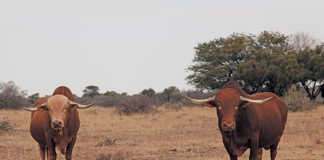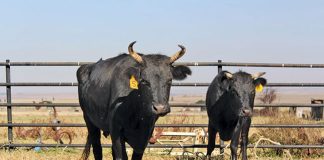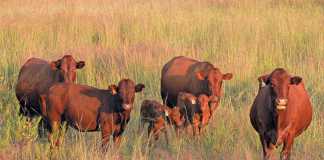
Photo: Dr Jan du Preez
Heat stress has an obvious negative impact on the immune function and general health of livestock. This is particularly true for dairy cows, as the impact of this is seen throughout the life cycle of a cow, and affects each of her life stages.
Heat stress also suppresses the animal’s immune system and undermines her ability to maintain homeostasis, a self-regulating process by which an organism maintains stability while adjusting to conditions that are best for its survival.
Climate change vs global warming
Climate change and global warming are terms that may be used interchangeably, but they are not the same phenomenon. It is important to understand the difference:
- Global warming is primarily a result of the accumulation of greenhouse gases (GHG) in the earth’s atmosphere, of which carbon dioxide is a major contributing factor. Global warming refers to actual ‘warming’, that is, an increase in the world’s average temperature. Since the beginning of the 20th century, the earth’s average atmospheric temperature has increased by around 0,74°C. In South Africa, the average rate of warming is around 0,16°C every decade. Taking this into consideration, it’s expected that the country’s average termperature will increase by around 8°C over the next century.
- Climate change, on the other hand, refers to a change in the distribution of weather patterns over a long period of time. In this regard, it may refer to a change in the average weather conditions of a region, or to the time variation of weather patterns within the context of long-term averages. Some anthropogenic activities have been identified as the leading causes of ongoing climate change, which ultimately leads to global warming.
Dairy production
From 1931 to 2015, South Africa’s inland surface temperatures increased and decreased in certain coastal areas.
This change has, over time, had an impact on the types of farming methods employed, as farmers attempt to adapt to changing temperatures.
Livestock are particularly sensitive to climate and weather conditions, as has been proven by many studies over the years, and their performance is influenced, to a large extent, by weather conditions. As such, the weather and climate often limit the efficiency of a livestock operation, particularly that of dairy cows, which require very specific management to produce high volumes of milk.
This is also not particular to commercial farmers: the effects of unfavourable weather conditions are detrimental to the quantity and quality of milk produced, regardless of how intensive production is.
An excessively hot climate hinders a cow’s feed intake, milk production and her reproductive capacity, and leads to an increase in the cow’s metabolic heat. This has serious economic consequences for dairy farms.
Under warm conditions, environmental factors have a measurable impact on the production of dairy cows. As homothermal animals (warm-blooded mammals), the homeostasis of the cow is carefully controlled through a sensitive ratio of heat production to heat loss.
Variation in the ambient temperature leads to changes in the temperature of the cow’s peripheral body parts, and this is why the animal’s core temperature is used as a control parameter for changes in body temperature.
Environmental factors, such as sunlight, thermal radiation and air temperature, animal traits, such as the rate of metabolism, rate of water loss and geometric structure, and thermoregulating mechanisms, such as conduction, radiation, convection and evaporation, affect the energy exchange between the dairy cow and her environment. This in turn affects the body temperature of the animal, which in turn leads to changes in her metabolism and behaviour.
Temperature-humidity Index
The Temperature-Humidity Index (THI) is essential to determine how climate change effects the occurence of unfavourable conditions that may lead to heat stress in dairy cows. The THI is derived from the analysis of climate data over a long period of time. This climate data is collected from weather stations situated inside the main dairy production regions of South Africa.
The calculation of the THI serves as a useful index to determine heat stress. It remains one of the best and most practical parametres for the determination of ambient temperature and the impact of this on dairy cows, and remains the most efficient indicator of the potential effect of heat stress on animals.
The calculation of the THI as an index for heat stress in dairy cows is as follows:
THI = Tdb + 0,36tdp + 41,2, where Tdb = ambient temperature in °C (the temperature should be measured at around 2pm to determine the maximum temperature of the day), and tdp = dew point temperature in °C (also measured at around 2pm).
Seasonal THI values in South Africa
The warmest months of the year according to the highest average THI values are the five months that span from October to February. The warmest month of the year is January. During these months, farmers must ensure that their cows are kept in a cow-friendly environment, and that efficient management practices are implemented.
For example, the energy feed-to-roughage ratio should be around 80:20 to ensure that energy intake is increased during this time. Cows also need ready access to water with a temperature of around 21°C. Adapting the cow’s environment to better cope with an increase in temperature will ensure that the impact of heat stress on the cow’s efficiency will be as small as possible.
During these five months, farmers should aim to achieve a THI threshold of around 69 for sufficient milk produciton. A THI value of greater than 70 will result in a notable drop in milk production. The highest average monthly THI value of 83,43 was recorded in October 2019 in South Africa at the Lichtenburg weather station.
July is usually the coldest month in South Africa, with an average THI value of less than 70. As such, during July, dairy cows tend to perform optimally, and deliver a high volume of milk. This is largely because the majority of South Africa’s dairy cows are descendents of Northern European breeds, which typically perform better in colder temperatures.
As such, South Africa’s high temperatures and sometimes humid conditions are a threat to the dairy industry between the months of October and March, when the country is at its warmest.
Managing heat in the environment
Heat stress has the biggest negative impact on dairy cows, as all functions of the cow is affected by heat stress. However, farmers should remember that not all parametres to predict and limit heat stress in dairy cows are equally practical or reliable. As mentioned before, the THI thus remains the best index to use to control the impact of ambient temperature on dairy cows.
Dairy cows require sound management and housing in warm and humid environments in order to produce optimally.
Housing that has been well planned and good management, as well as the implementation of strategic practices, such as the lowering of the ambient temperature, are essential for the short-term protection of the herd.
The short-term well-being of the herd is critical for you to reach the long-term goal of your operation: the optimal efficiency of production and the welfare of your animals.
In the next article, we will look at the impact that heat stress has on milk production.
Email Dr Jan du Preez at [email protected], or phone him on 083 656 3638.










